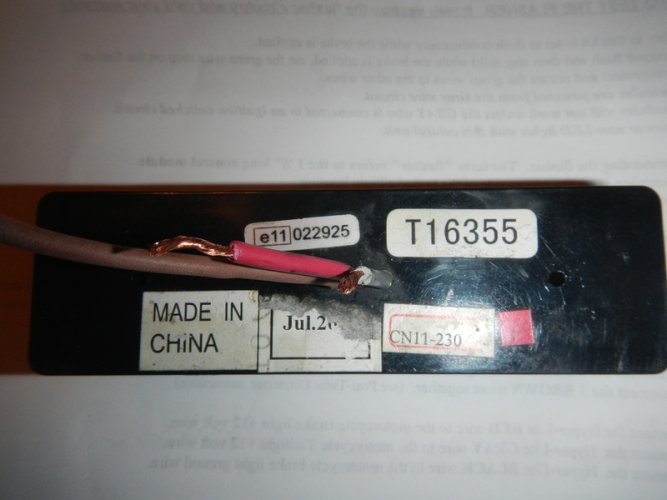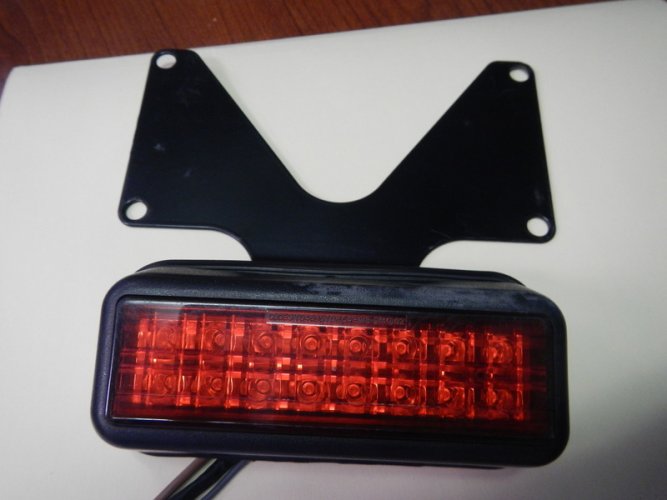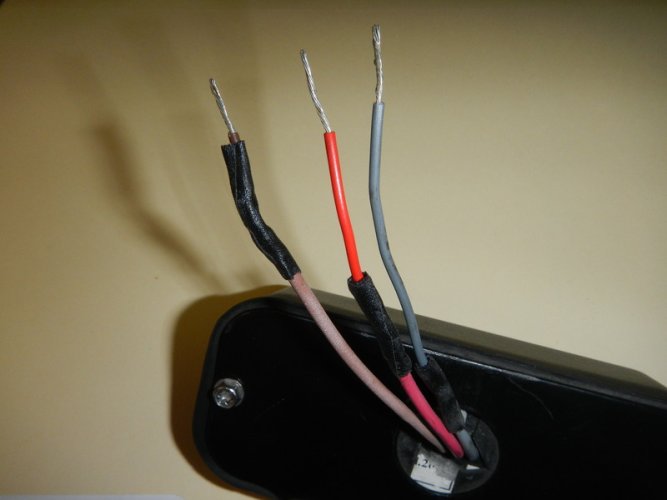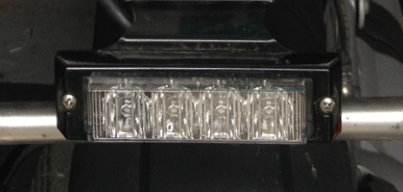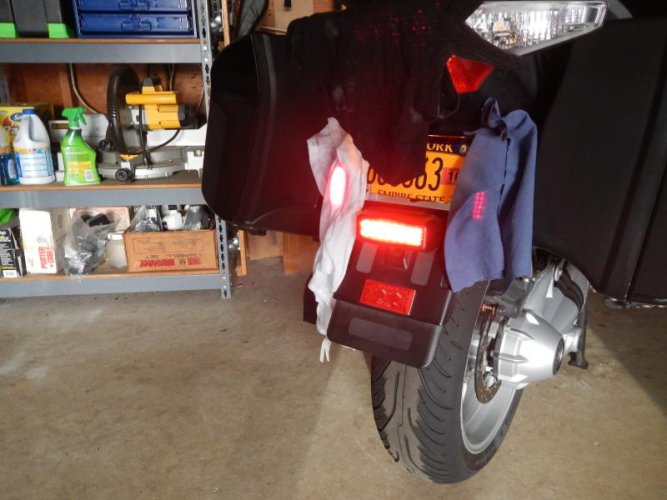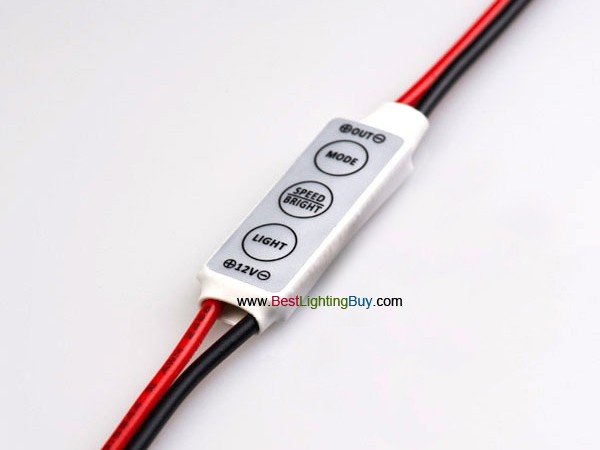rocketmanli
Chromehead
I have a 2009 R1200RT. I'm trying to install the BMW Supplemental 16-LED Brake light without buying the BMW wiring harness. I have a FuzeBlock FZ1 drawing switched delayed-off power from the rear 12v accessory outlet.
I got the LED light wired up and installed a couple of days ago.
I ran the red wire from the light to a switched 12v (+) on my FuzeBlock FZ1.
I ran the black wire from the light to the (-) side of the FZ1.
I ran the gray wire from the light to a piggy-back spade connector on the (+) gray striped side of one of the brake light bulb sockets.
It lights.
Its so simple, there's no way to do it wrong.
Turning key on, LEDs light up as a running light.
Applying the brakes, LED light flickers for milliseconds, then goes solid. Like its supposed to.
Just seems to me there's very little difference in the intensity of the light from running light to solid brake light. If there is a difference, its barely noticeable.
If I unplug the gray trigger wire, and apply the brakes, obviously no flicker and no brake light; just running light.
If I unplug the gray wire, apply the brakes, then while applying the brake, plug in the gray wire, the intensity from off to on is definitely more visible. As in the difference in intensity is greater. Seems the brightness is correct with brakes applied, but it seems that in running light mode, its almost too bright.
The stock RT tail/brake light bulb is a dual filament bulb with 2 wires going to it. One black ground. And one gray striped hot. I'm told the CANBus sends 6-8 volts back there as a running light, and increases it to 12-14v when the brakes are applied.
Can't figure for the life of me, why I seem to be getting the full 12-14v for both tail light and brake light on the supplemental light. Seems I did the same connections I would have done with the harness, just without it.
I've spoken to 2 BMW techs and both said they've tried wiring the supplemental brake light the way I did, and it never worked properly. They said the CANBus is a strange system, and recommended I spring for the correct harness to get my light to work. That just doesn't make logical sense to me.
Any insight or advice would be appreciated.
I got the LED light wired up and installed a couple of days ago.
I ran the red wire from the light to a switched 12v (+) on my FuzeBlock FZ1.
I ran the black wire from the light to the (-) side of the FZ1.
I ran the gray wire from the light to a piggy-back spade connector on the (+) gray striped side of one of the brake light bulb sockets.
It lights.
Its so simple, there's no way to do it wrong.
Turning key on, LEDs light up as a running light.
Applying the brakes, LED light flickers for milliseconds, then goes solid. Like its supposed to.
Just seems to me there's very little difference in the intensity of the light from running light to solid brake light. If there is a difference, its barely noticeable.
If I unplug the gray trigger wire, and apply the brakes, obviously no flicker and no brake light; just running light.
If I unplug the gray wire, apply the brakes, then while applying the brake, plug in the gray wire, the intensity from off to on is definitely more visible. As in the difference in intensity is greater. Seems the brightness is correct with brakes applied, but it seems that in running light mode, its almost too bright.
The stock RT tail/brake light bulb is a dual filament bulb with 2 wires going to it. One black ground. And one gray striped hot. I'm told the CANBus sends 6-8 volts back there as a running light, and increases it to 12-14v when the brakes are applied.
Can't figure for the life of me, why I seem to be getting the full 12-14v for both tail light and brake light on the supplemental light. Seems I did the same connections I would have done with the harness, just without it.
I've spoken to 2 BMW techs and both said they've tried wiring the supplemental brake light the way I did, and it never worked properly. They said the CANBus is a strange system, and recommended I spring for the correct harness to get my light to work. That just doesn't make logical sense to me.
Any insight or advice would be appreciated.

